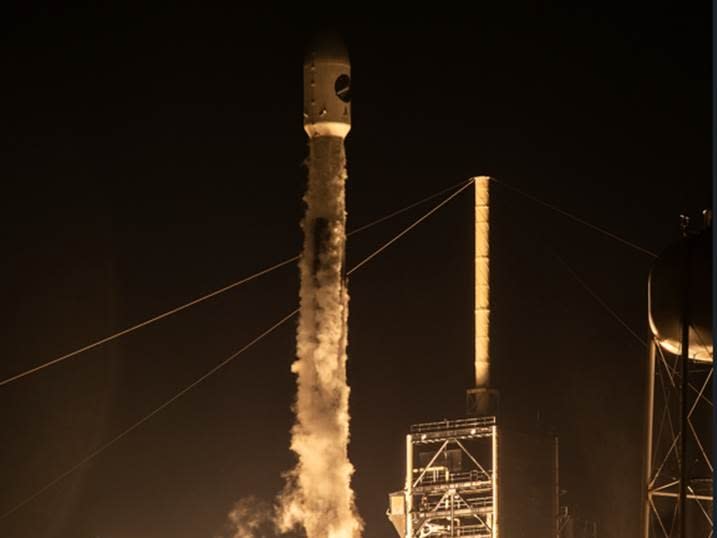X-37B: Bridging Quantum Frontiers in Space
 The Tech Times
The Tech Times
In a remarkable stride towards the future of space technology, the United States Space Force has successfully launched the X-37B spaceplane on a mission that carries not only expectations but also a payload of innovative quantum and communications experiments. The launch took place at NASA's Kennedy Space Center, utilizing the reliability and power of a SpaceX Falcon 9 rocket. This event not only marks a significant milestone in space exploration but could also herald a new era where quantum technology plays a pivotal role in how humanity interacts with space.
A Brief History of the X-37B
The X-37B Orbital Test Vehicle, often shrouded in mystery and speculation, is an unmanned, reusable spacecraft developed by Boeing and operated by the U.S. Air Force, and now, the Space Force. Its first flight took place in 2010, and since then, the spaceplane has completed multiple missions, each more ambitious than the last.
Originally part of NASA's program, the X-37 was transferred to the Department of Defense in the mid-2000s, where it became a crucial component of the U.S. strategy to dominate space. Known for its secrecy, the X-37B often sparks curiosity and intrigue, as its missions are typically classified. However, what is known is that it serves as a testbed for new technologies, which are crucial for maintaining the U.S.'s edge in space capabilities.
Quantum Leap: The Next Frontier
The inclusion of quantum experiments on the X-37B marks a significant leap forward. Quantum technology is expected to revolutionize various fields, from computing to communications. In space, its potential applications range from creating unhackable communication channels to developing new forms of sensors that could enhance navigation and reconnaissance capabilities.
Quantum communications, in particular, could address the growing concern over data security in space. Theoretically unbreakable, quantum encryption leverages the principles of quantum mechanics to secure data transmissions against any form of interception or hacking. This could prove invaluable for military and civilian applications alike.
The Role of SpaceX
This launch also highlights the increasingly important role of private companies in space exploration. SpaceX, with its Falcon 9 rockets, has become synonymous with reliability and cost-effectiveness. The partnership between SpaceX and the U.S. government demonstrates a successful model of public-private collaboration, a trend that is likely to continue as space becomes more accessible.
Falcon 9's reusability not only reduces the cost of missions but also aligns with the goals of sustainability and rapid deployment, which are critical as the frequency of launches increases. Such advancements might soon pave the way for more ambitious projects, such as lunar bases or Mars explorations.
Implications and Future Prospects
The successful deployment of quantum and communication experiments aboard the X-37B could have far-reaching implications. Should these technologies prove viable, they could redefine military strategy in space, influence international policies, and spur technological advancements across various sectors.
Moreover, this mission underscores the importance of investing in cutting-edge research. As countries around the world vie for dominance in space, those who lead in technological innovation will likely set the rules of engagement. The U.S., with missions like the X-37B, is positioning itself at the forefront of this new space race.
In conclusion, the launch of the X-37B is not just another mission; it is a statement of intent, a dedication to exploring and mastering the complexities of space. As we stand on the brink of a new era powered by quantum technology, the possibilities are as vast as the cosmos itself.
Source: Space Force launches X-37B carrying quantum and comms experiments
Subscribe to my newsletter
Read articles from The Tech Times directly inside your inbox. Subscribe to the newsletter, and don't miss out.
Written by
